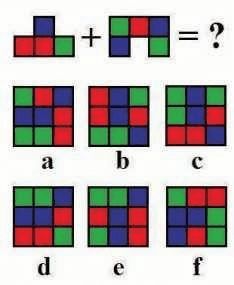Math Olympiad questions can seem rather daunting. And rightly so – a well set Olympiad question will test your fundamentals and analytical skills, and challenge your way of thinking.
In solving Math Olympiad types of questions, you generally need to be able to think quickly on your feet – one factor that makes these questions harder is that the time available to you is limited. A second factor is that you may have negative marking for wrong answer, so sometimes it would seem better to leave the question rather than putting in an answer you are not sure about. To add to the confusion, sometimes it is possible that more than one answer is correct.
So how do you tackle this. The first step is of course is “Don’t Panic”. Take a deep breath, relax, read the questions and do your best.
In this article we talk about some general practices you should follow. In the next part of this article, we’ll talk about some specific mathematical techniques that could help you tackle such exams better.
The first step is make sure all your resources are there with you – pencils, erasers, spare paper for computations (if allowed). It seems trivial, but these are things that you don’t want to worry about once the test starts. Now, start reading the test.

There’s no standards here – different people do it in different ways. Some people start from a fixed location, typically the beginning of the paper, but some folks even like to start at the end (the theory being that the examiners would have gotten tired of finding tough questions, and would start putting easier questions towards the end – of course, no sensible examiner would set papers that way). Some other folks like to look for questions in topics they are familiar in, and try those first. Whatever approach you are comfortable with is fine.
The most important thing, and this is where a lot of people make their mistake – read the question completely and carefully. Spend as much time you need on this part. Any mistake you make here will ensure you get the wrong answer.
Let me repeat this – read the question carefully and completely. Find out what the question is really all about. Take careful note of all the values and data provided in the quesion.
Then, and only then, should you start trying to find the answer.
And once you have solved it, or think you have – check that your answer indeed is what the question is asking for (If, for example, the question asked for speed of a car, and you have 121 seconds as your answer – something has gone wrong)
Second, keep track of the time. Keep a general idea of how much time you have per question. It need not be exact – for example, if you have 2 hours and there are 50 questions, just think that you’ll have about 2 minutes per question. Of course, you may do some questions faster, but keep this general timeframe in mind per question. If you are completely confident of a question, you could take a little more time (say 3 minutes) on it, but generally try not to spend more than the computed time per question. In fact, ideally you should target leaving the last 10 minutes for a quick revision.
Now, if you haven’t attempted all the questions when you find there are 10 or so minutes left then it’s time to start picking and choosing from the remaining questions. Run through them quickly to see which ones look easiest for you to solve. Then try those. The next tip is on using your spare paper effectively. It can get very messy quickly, so you should mark off specific areas for questions for which you need to use the spare paper for computation. You could use a grid kind of structure if that helps – but the aim is to use it effectively and neatly. And make sure that for questions where you use it, copy all the values correctly to the spare sheet. Double check it, and triple check. Do the same thing while copying the answer back.
(Source: Edugain Blog)

